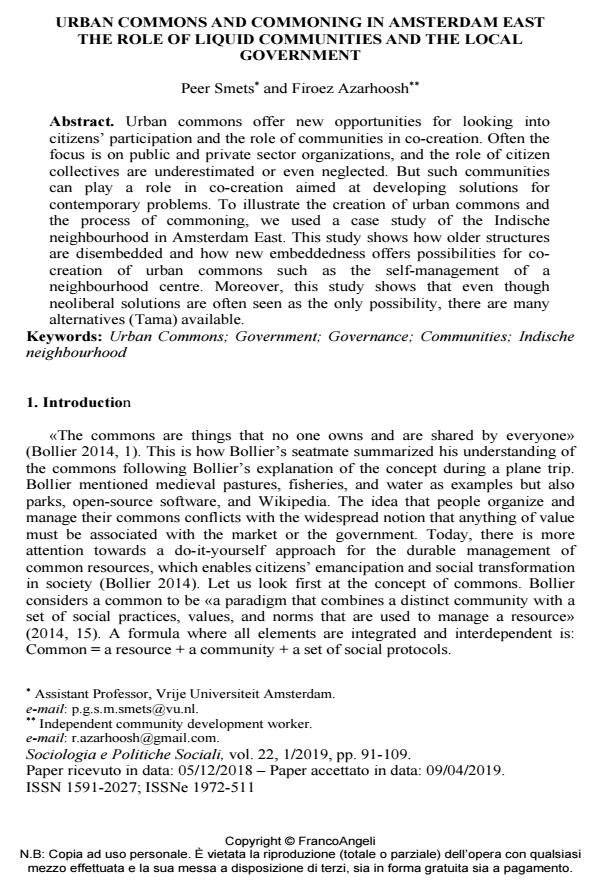Urban commons and commoning in Amsterdam east the role of liquid communities and the local government
Journal title SOCIOLOGIA E POLITICHE SOCIALI
Author/s Peer Smets, Firoez Azarhoosh
Publishing Year 2019 Issue 2019/1
Language English Pages 19 P. 91-109 File size 244 KB
DOI 10.3280/SP2019-001005
DOI is like a bar code for intellectual property: to have more infomation
click here
Below, you can see the article first page
If you want to buy this article in PDF format, you can do it, following the instructions to buy download credits

FrancoAngeli is member of Publishers International Linking Association, Inc (PILA), a not-for-profit association which run the CrossRef service enabling links to and from online scholarly content.
Urban commons offer new opportunities for looking into citizens’ participation and the role of communities in co-creation. Often the focus is on public and private sector organizations, and the role of citizen collectives are underestimated or even neglected. But such communities can play a role in co-creation aimed at developing solutions for contemporary problems. To illustrate the creation of urban commons and the process of commoning, we used a case study of the Indische neighbourhood in Amsterdam East. This study shows how older structures are disembedded and how new embeddedness offers possibilities for co-creation of urban commons such as the self-management of a neighbourhood centre. Moreover, this study shows that even though neoliberal solutions are often seen as the only possibility, there are many alternatives (Tama) available.
Keywords: Urban Commons; Government; Governance; Communities; Indische neighbourhood
- Community experiences and aspirations of young Syrian newcomers in a neighborhood in Amsterdam, the Netherlands Kyohee Kim, in Journal of Community Practice /2022 pp.418
DOI: 10.1080/10705422.2022.2137873 - The Politics and Aesthetics of the Urban Commons: Navigating the Gaze of the City, the State, the Market Louis Volont, Peer Smets, in Social Inclusion /2022 pp.84
DOI: 10.17645/si.v10i1.5392
Peer Smets, Firoez Azarhoosh, Urban commons and commoning in Amsterdam east the role of liquid communities and the local government in "SOCIOLOGIA E POLITICHE SOCIALI" 1/2019, pp 91-109, DOI: 10.3280/SP2019-001005